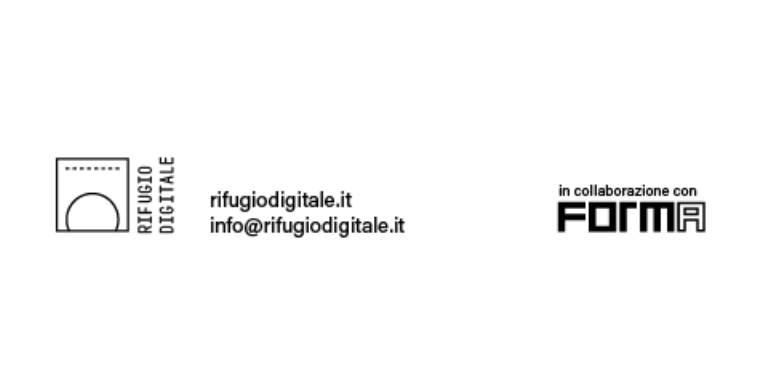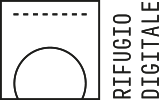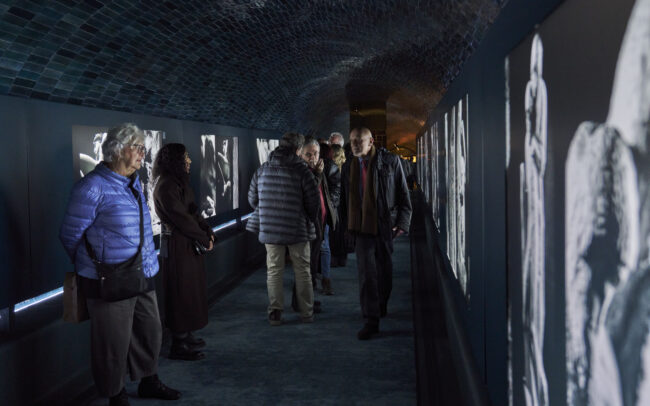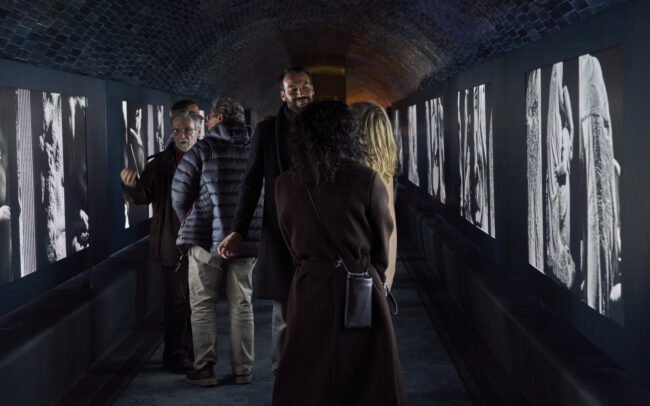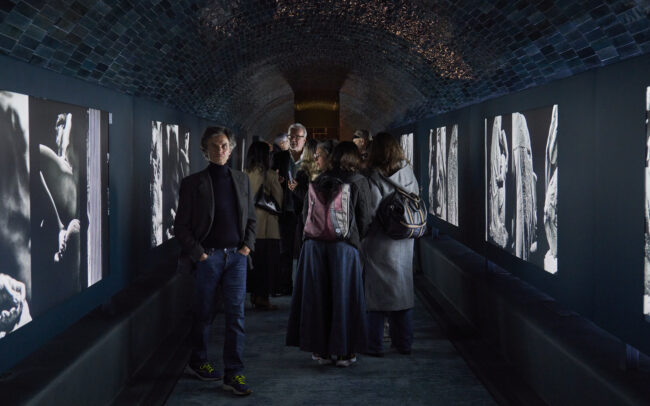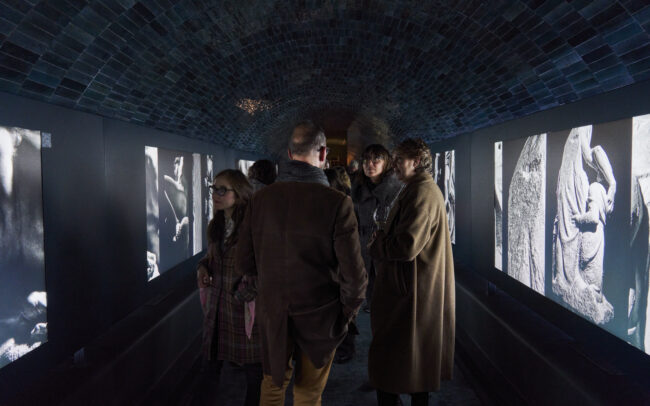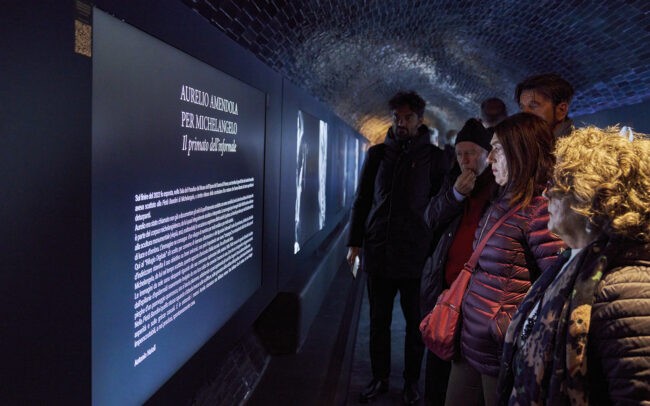AURELIO AMENDOLA FOR MICHELANGELO.
The primacy of the informal
Aurelio Amendola
OPENING: November 13, 2024, at 6.30 pm at Rifugio Digitale
LECTURE: November 13, 2024, at 5.30 pm at Spazio A, Archea Associati
*entrance from Lungarno Benvenuto Cellini 13, Florence
*advance booking required, write to info@rifugiodigitale.it
Nov. 13, 2024-Jan. 5, 2025 | Wed.-Sun. 11 a.m.-7 p.m.
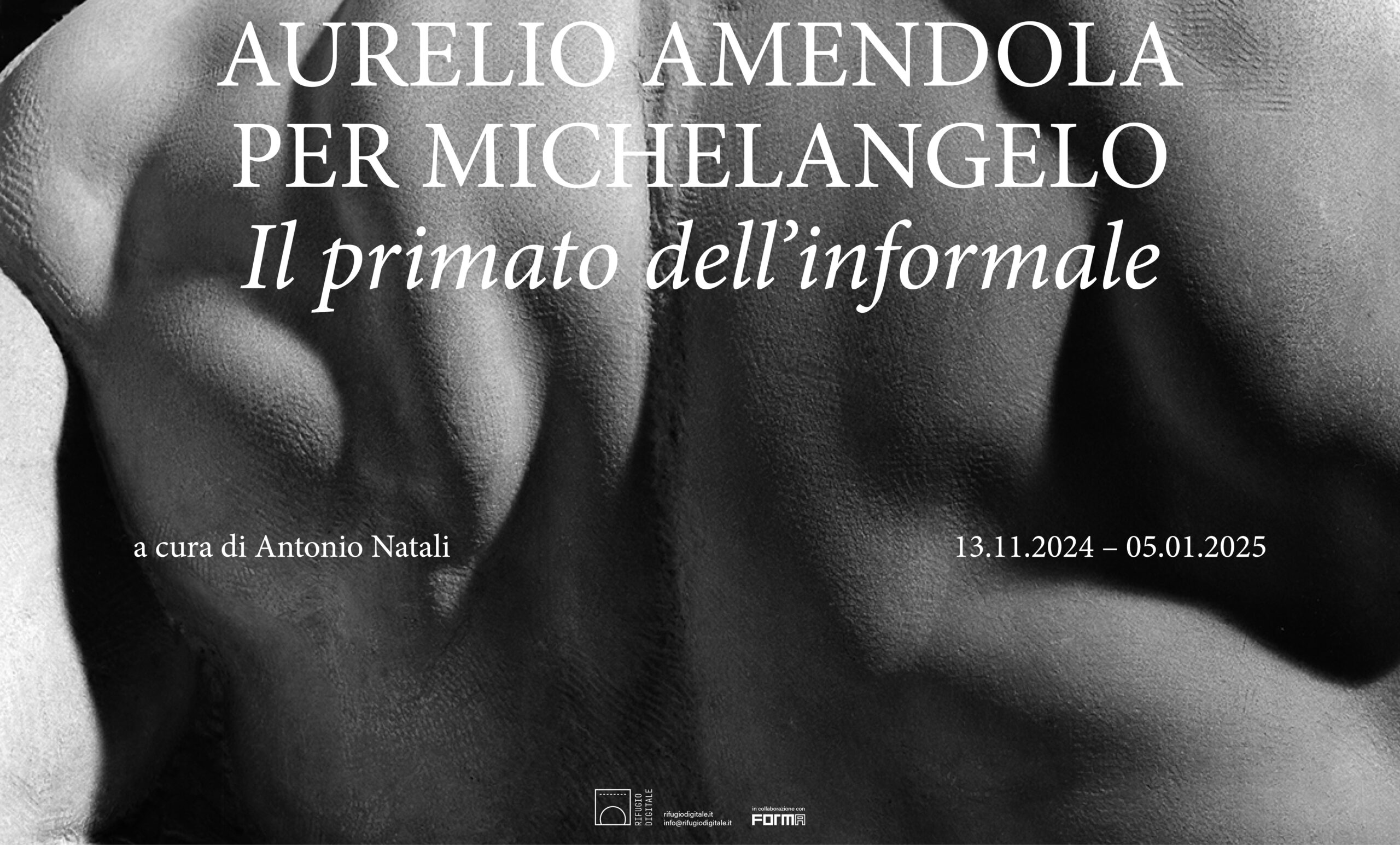
From November 13, 2024 to January 5, 2025, Rifugio Digitale presents the exhibition Aurelio Amendola for Michelangelo. The primacy of the informal, by the award-winning photographer Aurelio Amendola, curated by Antonio Natali. The event is organized in collaboration with Forma Edizioni.
The inauguration will be held on Wednesday, November 13th at 6:30 p.m. with the presence of the artist Aurelio Amendola and the curator Antonio Natali and will be preceded by the Lecture to be held at 5:30 p.m. at Spazio A, Archea Associati (event by reservation only, write to info@rifugiodigitale.it)

Aurelio Amendola, La Pietà Rondanini, Michelangelo Buonarroti, Castello Sforzesco, 2001
The primacy of the informal
Curatorial text
Toward the end of 2022, about thirty large photographs taken by Aurelio Amendola of Michelangelo’s Pietà Bandini were exhibited in the Paradise Room of the Opera del Duomo Museum in Florence, near the end of a restoration that had removed a number of disfiguring excrescences.
Aurelio had been asked not just to document the outcome of a restoration, carried out with great respect, but to provide his interpretation of a work that is part of the artist’s corpus, of which he has made a lengthy and detailed study. His pictorial narrative of the Florence Pietà exalts the monumental sculpture (viewed from every possible angle) in all its magnificence, emphasizing its ability to express the tenderest pathos. Aurelio achieves this through the skillful application of harsh light and deep shadow, producing images that appear half real and half abstract.
Here at the ‘Rifugio Digitale’, we have chosen, on the contrary, to give the abstraction and informal figurations a primary role, asking Aurelio this time to focus his lens on aniconic features, without making of them a new ‘campaign’, but extrapolating them from his photographs of Michelangelo’s works, taken in the past, prior to any observation of their aniconic quality and enabling us to see what was at times their endearing enchantment.
The pictures alone are eloquent with regard to his minute exploration of the material. In the Roman Pietà, Aurelio’s eye is attracted by the epiphanies of skin gently softened by a warm light that turns the marble into wax. That same wax later hardens and solidifies into the folds of the drapery in the manner of Quercia, then allows itself to be shaped, softening and almost flattening the spaces between the tensed muscles and soft tissues of the flesh. In the Pietà Bandini, that same eye zooms in on tiny scratches, on marks left by the sculptor’s tools, accidental scrapes, random knobs and creases. In both sculptures, Aurelio recognizes a new beauty, a beauty that nature, with its unknowable designs, creates spontaneously.
Antonio Natali
Artist’s biography
Aurelio Amendola
Born in Pistoia (January 19, 1938), in the course of his exceptional career as an art photographer, Aurelio Amendola has devoted himself intensively to contemporary themes, to the extent of putting together nothing less than a Gallery of Portraits of the most celebrated masters of the 20th century, a sort of Gallery of Famous Men of another epoch, revisited with the trappings of these modern times: De Chirico, Pomodoro, Schifano, Lichtenstein, Warhol. Thanks to his long personal acquaintance with many of them (Manzù, Fabbri, Ceroli, Vangi, Kounellis, Pistoletto, Parmiggiani, Paladino, Barni, Ruffi, Mainolfi) he was able to product countless monographic works illustrated by his photographs. His friendships with Marino Marini and Alberto Burri, unforgettable companions on road trips and in life, were constant sources of inspiration. At the same time, Amendola distinguished himself for his celebrated photographs of Renaissance Italian sculptures or, more in general, of those more focused on the classical tradition, of which he achieved a profound understanding in terms of volume, three-dimensionality, and contrasts, and was able in every picture to offer a purposely original point of view, inspired by a tactile, emotional or sensorial impression.
His early works are marked by the now celebrated volume entitled Il pulpito di Giovanni Pisano a Pistoia (1969) (The Pulpit of Giovanni Pisano in Pistoia); after his initial photographic campaign (1964) many others follows, along the same lines, between rigorous fidelity and changing interpretation, especially as regards his unusual use of light. His interest for ancient art is rooted in many other photographic works: Donatello, Jacopo della Quercia, Luca della Robbia, Canova, Bernini, Michelangelo. Michelangelo’s marbles, in particular – became a constant source of inspiration – featuring in many catalogues, exhibitions and monographs. In 1994, with his book Un occhio su Michelangelo (An Eye on Michelangelo) (devoted to the works at the Medici Chapels in Florence, at San Lorenzo, Amendola won the Oscar Goldoni Award for the best book of photography for the year. As a whole, Amendola’s work illustrates the great themes of Italian art, producing real masterpieces, as in his volumes on St. Peter’s Basilica, seen from his personal viewpoint: the elegant perspectives, the unexpected details, the surprising glimpses.
Over the years, Amendola has constantly pushed the boundaries, taken risks, tested unusual combinations, juxtapositions, counterpoints, pairings Applying contemporary interpretations to ancient works, he develops an original approach to the classical matrix. Somehow, every photographic sequence composed by him acquires a timeless, ageless quality. Like immortals.
Alongside the portraiture and the ancient statuary, Amendola has amply explored the poetic character of places, in search of residential and architectural genius: the Duomo in Milan, Matera, San Galgano, the park of sculptures of the Gori Collection at Fattoria Celle in Santomato, The Vittoriale of the Italians, the Grande Cretto by Burri.
Learn more
About him and for him many great historians and critics have written: Antonio Paolucci, Antonio Natali, Tomasi Montanari, Maurizio Calvesi, Bruno Corà, Vincenzo Trione, Eike D. Schmidt, Flaminio Gualdoni, Walter Guadagnini, Antonio Scurati, Silvio Ceccato, Cristina Acidini Luchinat: each marveling at the sensuality and spirituality of his Golden Camera.
His works are part of prestigious private and public collections; among these, the Maramotti Foundation of Reggio Emilia, the GAM of Turin, the Arnaldo Pomodoro Foundation of Milan, the MAXXI Museum in Rome, the Alberto Burri Foundation of Città di Castello, the Uffizi, Palazzo Fabroni in Pistoia, the Cassa di Risparmio di Pistoia e Pescia Foundation.
He has participated in countless national and international exhibitions: Cappelle Medicee, Palazzo Reale Milan, 1995; Michelangelo Scultore, Hermitage Museum, 2007; Combustion (Alberto Burri), Galerie Sapone Nice, 2012; In Atelier. Aurelio Amendola: fotografie 1970-2014 curated by Vincenzo Trione, Triennale Milano, 2014.
His many awards and citations include the Cini da Pistoia Award (1997); The Micco (2012); the academic diploma Honoris Causa in Visual Arts and the title of Academic of Italy (2014, from the Academy of Fine Arts of Catanzaro); the docufilm Focus on Art (2015, directed by Beatrice Corti); and the award entitled A Life for Art in Gaeta, in 2016. In November 2009, he was received, with other artists, by Pope Benedict XVI in the Sistine Chapel. In February 2021, his home town of Pistoia held an exhibition of his work entitled An Anthology, at Pistoia Musei, curated by Paola Goretti and Marco Meneguzzo. In April 2022, An Anthology will be inaugurated in Bari, at Castello Svevo.
On September 8, 2022, the exhibition, entitled Lo sguardo di Aurelio Amendola, fra naturalismo e astrazione (Aurelio Amendola and his view, between naturalism and abstraction) was inaugurated at the Opera del Duomo Museum in Florence, accompanied by a catalogue with text by Prof. Antonio Natali.
The photographs for his work La Pietà Bandini were taken in January 2022, following its restoration.
In February 2023, the Holden Luntz Gallery in Palm Beach, Florida, showed works by Michelangelo, Canova and Bernini in the exhibition Of Flesh and Stone and Amendola. Burri, Vedova, Nitsch: Actions and gestures, organized by the Palazzo Albizzini Burri Collection and curated by Bruno Corà.
The same exhibition is currently being held at the Emilio and Annabianca Vedova Foundation in Venezia.
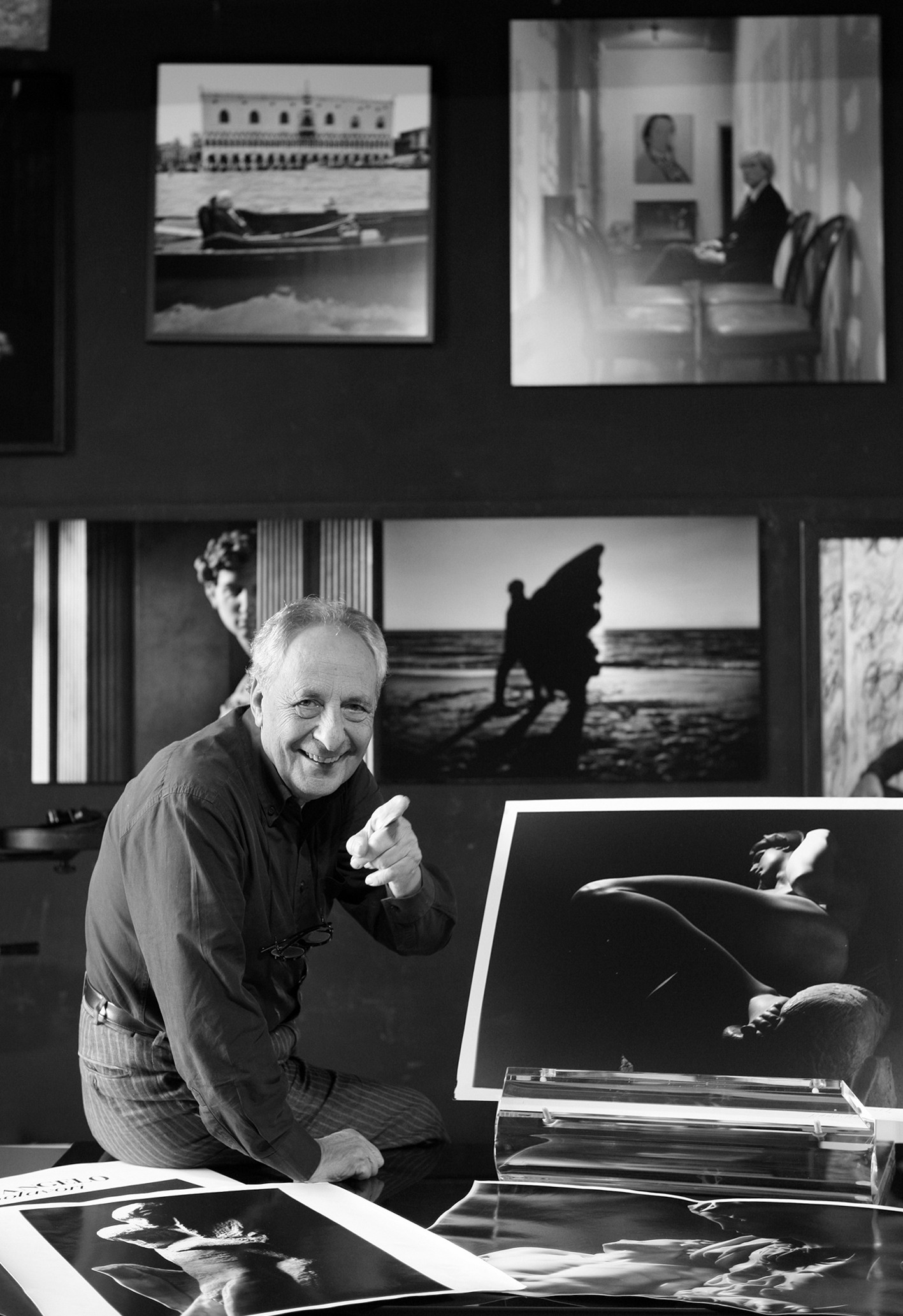
in foto Aurelio Amendola
Curator’s biography
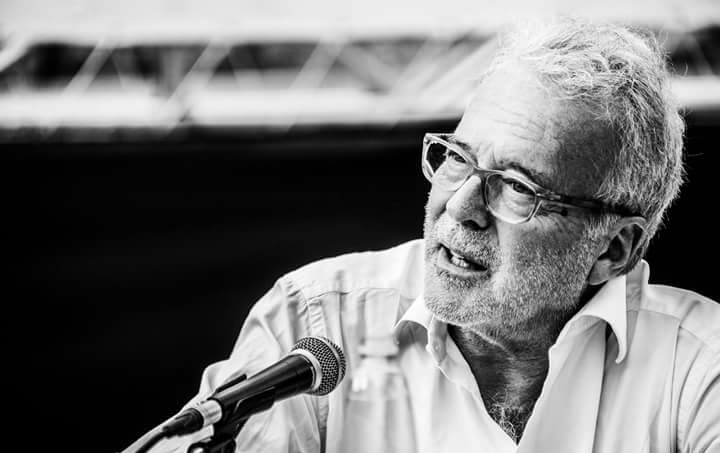
in photo Antonio. Ph: Antonio Viscido, 2017
Antonio Natali
Born in Piombino on August 29, 1951, he worked at the Uffizi Gallery from January 1981 until August 2016, where he was director from 2006 to 2015. In 2006, in a competition at the Politecnico di Milano, he obtained qualification as ordinary professor of Modern Art History. From 2000 to 2010 he taught Museum Management at the University of Perugia. At the Uffizi, before he became director, he was in charge of the department of 16th and 17th century painting and contemporary art. He also managed the reorganization of numerous rooms at the museum, including such historic ones as the Buontalenti Tribute and the Niobe Room. He provided the museum with three editorial book series and an ‘Annual Bulletin’. He also acquired numerous 20th century and contemporary works for inclusion in the collection of portraits owned by the Florentine museum.
Learn more
In addition to organizing exhibitions at the Uffizi, he organized many shows abroad (in Spain, China, Japan and the United States), consisting mainly of works held in the museum’s deposits, so as not to penalize the visitors to the Gallery. He also conceived the idea of The city of the Uffizi, a series of exhibitions tending to promote locations outside the main tourist channels.
He always fought for the concept that the museum should be an educational institution and a place of cultural advancement against those who debase its value to that of a mere source of revenue. His own studies focus above all on the sculpture and painting of the 15th and 16th century Tuscan artists, with frequent incursions into contemporary art.
Among the exhibitions curated by him is the trio of shows at Palazzo Strozzi devoted to Florentine art of the 16th century: in 2010 it was Bronzino painter and poet at the Medici court, in 2014 Pontormo and Rosso Fiorentino. Divergent approaches to ‘mannerism’, in 2017 The 16th Century in Florence: ‘Modern mannerism’ and counterreformation.
Program
November 13 at 5:30 p.m.: Lecture at Spazio A, Archea Associati with the artist Aurelio Amendola and the curator Antonio Natali.
entrance from Lungarno Benvenuto Cellini 13, Florence
advance booking required, write to info@rifugiodigitale.itNovember 13 at 6:30 p.m.: exhibition opening with the artist Aurelio Amendola and the curator Antonio Natali
ingresso liberoNovember 13, 2025 – January 5 2025, Wed.-Sun. 11 a.m.-7 p.m.: tours of the exhibition
free entrance; reservation required for guided tours
Useful Materials
Gallery
Press
Learn about our reality and that of our partners
Rifugio Digitale is an exhibition space inside an anti-aircraft tunnel that aims to be a place dedicated to the promotion of digital art, where architecture, design, photography, cinema, literature and all the other multiple artistic and expressive forms also find their own dimension by dialoguing with each other. The cultural proposals and events that we welcome in our space are the result of a great work of collaboration and research between subjects and realities of the territory with which we share perspectives and objectives.
